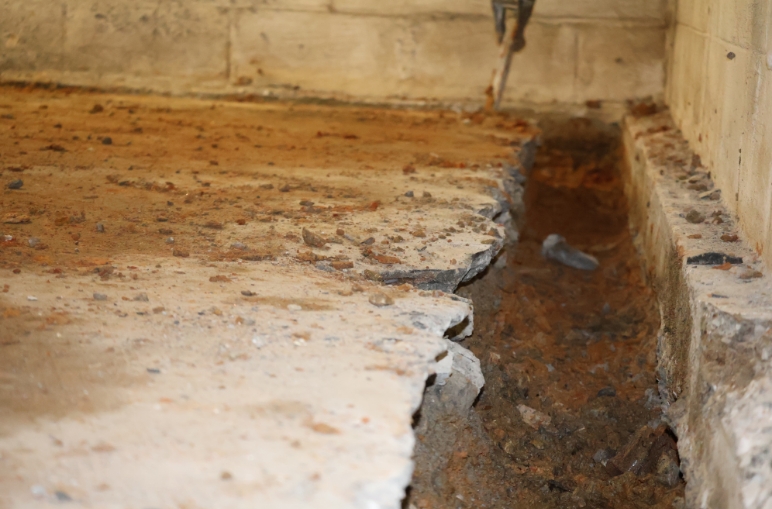Why French Drains Aren’t the Best Solution for Basement or Crawl Space Flooding
When it comes to preventing basement or crawl space flooding, many homeowners and even some contractors often recommend the installation of French drains. While this solution might seem effective at first glance, it is not always the best option for long-term flood prevention. At Foundation Solutions Group, we have extensive experience in dealing with these issues, and we understand the limitations of French drains. Here’s why French drains might not be the best solution for your home’s flooding problems.
Understanding the Components of Soil
One of the fundamental reasons French drains fail over time is due to the nature of soil composition. Soil is made up of three main components: sand, silt, and clay. While sand and clay particles are typically large enough to be kept out of a drainage system, silt is not. Silt is the smallest particle in soil and can easily infiltrate and clog French drains, rendering them ineffective over time. This clogging process might take a year or even ten years, but eventually, homeowners will find themselves revisiting the same flooding issues.
The Advantages of Interior Drainage Systems
At Foundation Solutions Group, we recommend and implement interior drainage systems for a more effective and long-lasting solution. By installing drainage inside the basement or crawl space, we can avoid the problem of silt infiltration altogether. This method ensures that the drainage system remains free from clogs and provides reliable protection against flooding for the life of the structure. This is why we confidently offer transferable, life-of-the-structure warranties.
The Problem with Exterior French Drains
Exterior French drains, even when installed at the footing level, often fail due to several issues. One significant problem is the clay bowl effect. Clay soils, which are prevalent in many areas, tend to hold water. After a rain, the water remains in the clay soil for days, creating a persistent moisture problem next to the structure. This water will eventually find the path of least resistance, often infiltrating basements or crawl spaces through mortar joints, tie-ins, or cracks in concrete walls.
Moreover, exterior French drains are designed to manage surface water but do little to address subsurface water moving through the ground. During heavy rains, subsurface water can bypass the French drain entirely and still reach your foundation, causing flooding. Therefore, exterior French drains are not effective at addressing all potential water sources.
The Importance of Interior Waterproofing
Effective waterproofing involves addressing water infiltration from the inside. By placing drainage systems inside the basement or crawl space, near the footing, we can ensure that water is captured and redirected before it causes any damage. This method not only prevents silt from clogging the drain but also manages water more efficiently by addressing both surface and subsurface sources.
French drains, while popular, are often not the best solution for preventing basement or crawl space flooding. They are susceptible to clogging from silt and are ineffective against subsurface water infiltration. At Foundation Solutions Group, we specialize in interior drainage systems that provide reliable, long-term protection against flooding. Our approach is proven to work, allowing us to offer extensive warranties and peace of mind to our clients.
If you are experiencing water issues in your basement or crawl space, contact us for a free inspection.
Our expert team will provide you with a solution that truly works, ensuring your home remains dry and safe.

Written By Shaun Miller, Owner Foundation Solutions Group
Shaun Miller is the owner of Foundation Solutions Group, a trusted foundation repair and waterproofing company serving South Central Kentucky and Middle Tennessee. With over 20 years of experience, Shaun is committed to delivering quality craftsmanship and ensuring that every project is done right the first time, backed by the company’s “Fix-It-Forever Guarantee.” Passionate about educating homeowners, Shaun leads the company’s "Solutions University" initiative to help clients protect their homes through knowledge and preventative care. Dedicated to his community, Shaun also supports local organizations and values the trust his customers place in him.

